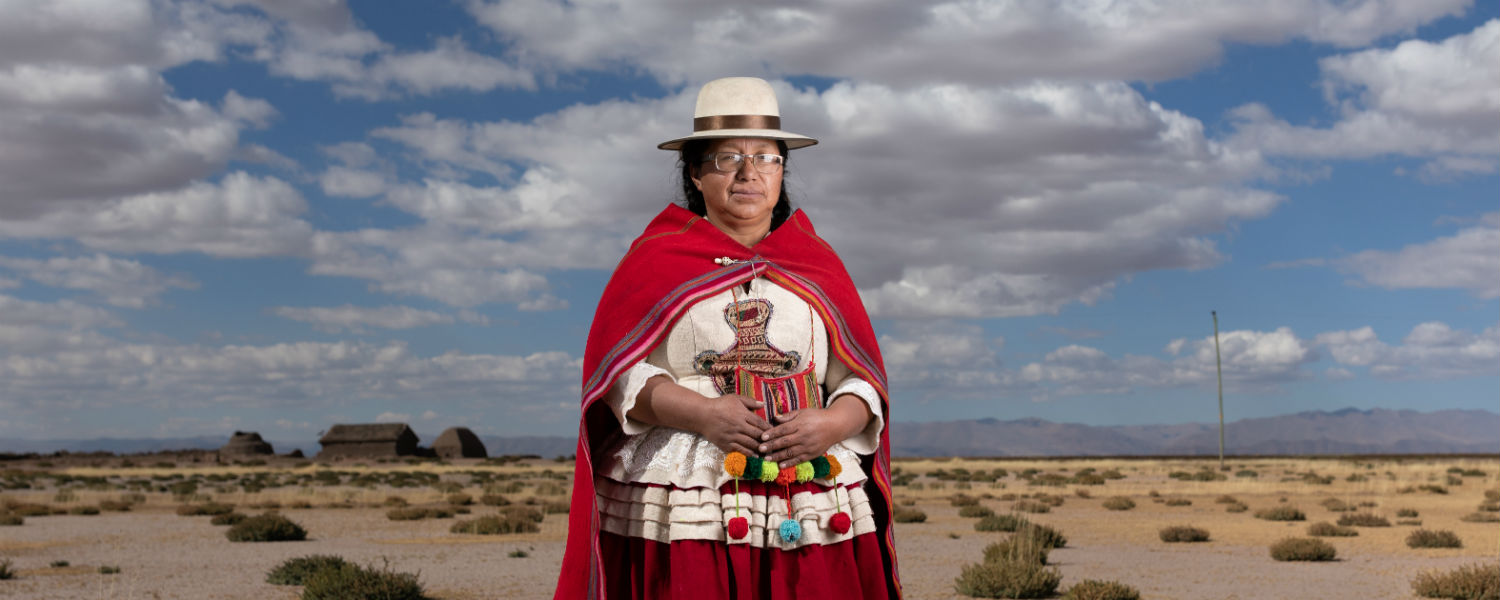Trigidia Jimenez Franco, is a Quechuan producer from Bolivia and a true believer in the special connection people have to the land they live on. A trained agronomist, a career typically reserved for men, she works with her husband and children fulfilling a dream she always held – to produce cañahua, an indigenous and highly nutritious grain. Trigidia is a passionate advocate for the production and consumption of indigenous foods and she shares her knowledge and experience of cañahua production far and wide.
Why should cañahua be a staple of the Bolivian diet?
TJF: I always encourage people see cañahua from two perspectives. As a producer, cañahua is a crop that has managed to adapt to climatic changes without losing its productive capacity. It is such a brave grain, produced with very little water it is resistant to frost. As a consumer, we know from our grand-parents and their experience that cañahua is a superfood. Its nutritional value is complemented by its pharmaceutical properties that prevent and control disease. I am sure that in the future Bolivians will continue to sow cañahua. It will be one of the foods that will feed the country and may eventually provide food and nutritional security and with that, independence and power.
Despite its classification as a superfood, cañahua is not well known. Where can I buy it and how do people prepare and consume it?
TJF: While Bolivia has seen some small scale production of cañahua, it was for family consumption. The knowledge that cañahua was a superfood was hidden within producing families. Cañahua was in danger of being forgotten because it was not seen as commercially viable. Its nutritional value was restricted to rural areas and it was barely known in an urban contexts. Migration has been a very important factor in that, as people migrated to cities, grand-parent’s didn’t have anyone to pass their knowledge onto. The benefits of cañahua were left behind with the elders. When my family first saw the nutritional benefits of cañahua we tried to promote the crop’s value with friends and neighbors and make it known not only in our region but also in the cities nearby.
Telling people how to prepare cañahua has helped promote its production and consumption. The first thing you make is cañahua flour, this can be used in bread, in cookies, in mazamorra, and indirectly in soups. My family made cañahua cookies as a way to promote the flour and give consumers better options other than ground grain. Now my customers have no excuse for not eating cañahua because I offer a range of products so that they can, in some way, benefit from cañahua’s nutritional value.

How can we improve cañahua production in Bolivia and other parts of Latin America?
TJF: Cultivating ancestral knowledge is of course an important way to improve cañahua production but we also need to develop clean technology that does not depend on fuel or pollute the environment. Finding allies within other institutions is a key way to develop both of these factors – the knowledge and the technological expertise.
Much remains to develop cañahua cultivation to its full potential. This is not the job of a single producer, but a joint responsibility between producers, the municipality, regional government and the national state. Each of these actors are needed, and have a responsibility to create policies that can contribute to the development of cañahua cultivation. Action is needed, not only to support small scale production but also to transform markets, and fundamentally increase access to cañahua on a large scale. It is important to work with private institutions such as the International Cooperative Alliance (ICA) and Multilateral Investment Guarantee Agency (MIGA) — both are very important actors in achieving this goal. So far small steps have been taken, we must continue working in coordination with these institutions, local and national government and producers. There is still a long way to go.
Cañahua seems to be an important part of your life. Will you pass the values and agricultural rituals associated with cañahua and caring for the earth ‘Pachamama’ (mother earth) down to your children?
TJF: Cañahua means a lot to me. Through its cultivation I’ve learnt the values of the knowledge of my father and mother in-law and found my roots, my culture, even my identity – it’s given me a greater sense of who we are as people, and where we come from so that we can see where we are going.
Cañahua enabled me to develop new values and principles based on my great respect for the land, the ‘Pachamama’, and it made me a better person, a better woman and a better mother. I share this with my children all the time.
This interview was taken from the transcripts of the video ‘A Turn for the Better’. To Learn more about Trigidia’s story and the lives of other women championing food diversity in Bolivia, watch ‘A Turn for the Better’, produced by Hivos and IIED, in collaboration with BrandOutLoud, for the Sustainable Diets for Allprogramme.




